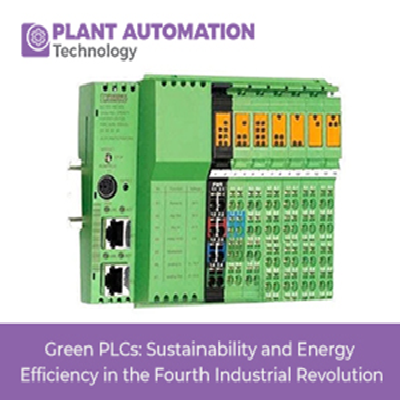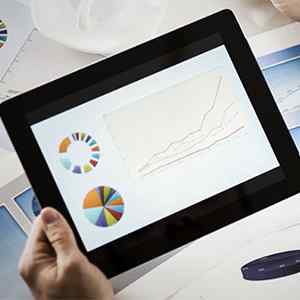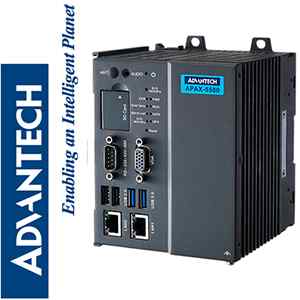Green PLCs: Sustainability and Energy Efficiency in the Fourth Industrial Revolution

I. Introduction
A. Definition of Green PLCs
Green PLCs, also known as Energy-Efficient PLCs or Eco-Friendly PLCs, refer to a class of Programmable Logic Controllers designed to minimize energy consumption and promote sustainability in industrial automation processes. These advanced PLCs are equipped with energy-saving features, smart algorithms, and hardware components optimized for efficiency.
B. Importance of Sustainability and Energy Efficiency in the Fourth Industrial Revolution
The Fourth Industrial Revolution, marked by the fusion of digital technologies and automation, has revolutionized manufacturing processes, enabling increased productivity and efficiency. However, the growing industrialization and automation also lead to a surge in energy demand and environmental concerns. As industries strive for economic growth and competitiveness, it becomes vital to address sustainability and energy efficiency to reduce their ecological footprint.
C. Overview of Industry 4.0 and its Impact on Manufacturing Processes
Industry 4.0 represents the convergence of cyber-physical systems, IoT, cloud computing, and AI in manufacturing. It enables interconnected and intelligent production systems capable of autonomous decision-making and optimization. The integration of Industry 4.0 technologies provides unprecedented opportunities to enhance manufacturing efficiency, but it also poses new challenges related to energy consumption and environmental impact.
D. Thesis Statement
Green PLCs play a pivotal role in promoting sustainability and energy efficiency in the Fourth Industrial Revolution by providing energy-saving solutions and enabling eco-friendly manufacturing processes.
II. The Need for Green PLCs in Industry 4.0
A. Growing Concerns about Environmental Impact
As climate change and environmental degradation gain increasing awareness, both businesses and societies are actively seeking solutions to mitigate their environmental impact. Industries face mounting pressure to adopt eco-friendly practices and embrace technologies that minimize greenhouse gas emissions while conserving precious natural resources.
B. Energy Consumption in Industrial Automation
Industrial automation, a cornerstone of Industry 4.0, relies heavily on PLCs and other automated systems to control manufacturing processes. As the scale of automation expands, so does the energy consumption associated with running these systems.
C. Challenges in Achieving Sustainable Manufacturing
Implementing sustainable manufacturing practices involves overcoming various challenges, including high initial investment costs, complex technological integration, and the need for workforce upskilling. Green PLCs offer a practical solution to address these challenges and move toward sustainable manufacturing.
| Also Read:Energy Efficiency in Manufacturing: Strategies for Sustainable Operations |
D. Role of PLCs in Controlling Energy Usage
PLCs are at the heart of automation systems, acting as the central control unit. By optimizing the control algorithms and integrating energy-efficient components, Green PLCs can actively manage energy consumption in manufacturing processes.
III. Features and Benefits of Green PLCs
A. Energy-Efficient Hardware and Components
Green PLCs are designed with low-power and energy-efficient hardware components, such as microprocessors and integrated circuits, to minimize electricity consumption during operation.
B. Power Management and Optimization Techniques
These PLCs incorporate sophisticated power management features and algorithms to monitor and regulate power distribution to different components, ensuring efficient energy usage throughout the system.
C. Real-time Monitoring and Reporting
Green PLCs enable real-time monitoring of energy consumption, providing valuable insights into the energy performance of individual processes and the entire production line. Real-time data helps operators identify energy-intensive activities and make data-driven decisions to optimize resource usage.
D. Adaptive Control and Load Balancing
Green PLCs can dynamically adjust control parameters and distribute workloads based on real-time data, optimizing energy allocation and load balancing across different processes to achieve maximum efficiency.
IV. Implementing Green PLCs in Manufacturing
A. Energy Audits and Assessments
Before implementing Green PLCs, industries can conduct comprehensive energy audits and assessments to identify areas with the highest energy consumption. These assessments provide crucial data for optimizing energy usage and determining the best strategies for implementing Green PLCs.
B. Retrofitting Existing PLC Systems for Improved Efficiency
For industries with established PLC systems, retrofitting these systems with energy-efficient components and software updates can be a cost-effective approach to enhance energy efficiency without investing in entirely new infrastructure.
C. Integrating Renewable Energy Sources
Green PLCs can be integrated with renewable energy sources, such as solar panels and wind turbines. This integration allows manufacturing processes to rely partially or entirely on clean and sustainable energy, reducing the overall carbon footprint.
D. Designing Energy-Efficient Control Strategies
Engineers and PLC programmers play a crucial role in designing energy-efficient control strategies. By optimizing production schedules, reducing idle times, and implementing sleep modes for inactive equipment, these strategies can contribute significantly to energy savings.
V. Case Studies of Green PLC Implementations
A. Automotive Industry: Optimizing Production Lines
In the automotive industry, Green PLCs have been deployed to optimize production lines. By adjusting the production rate based on demand and dynamically managing energy consumption during peak and off-peak hours, these PLCs help minimize energy waste and enhance overall efficiency.
B. Food and Beverage Industry: Sustainable Packaging and Processing
Green PLCs have been successfully utilized in the food and beverage industry to regulate packaging machinery. By optimizing energy usage during the packaging process, these PLCs reduce material waste and contribute to sustainable production practices.
C. Pharmaceuticals Industry: Energy-Efficient Cleanroom Operations
The pharmaceutical sector requires strict environmental controls in cleanroom operations. Green PLCs are employed to manage cleanroom environments efficiently, maintaining precise environmental conditions while minimizing energy consumption.
D. Renewable Energy Sector: Smart Grid Control with Green PLCs
Green PLCs are integrated into smart grid control systems within the renewable energy sector. By managing the flow of energy from various renewable sources, these PLCs optimize power distribution and minimize energy loss.
VI. Challenges and Limitations
A. Initial Investment and Cost Considerations
One of the primary challenges in adopting Green PLCs is the initial investment required for purchasing new energy-efficient PLCs or retrofitting existing systems. While the long-term energy savings justify the investment, the upfront costs can deter some businesses, especially small and medium-sized enterprises.
B. Compatibility and Interoperability Issues
Replacing or retrofitting existing PLC systems with Green PLCs may present compatibility challenges. Different generations of PLCs and proprietary protocols may not seamlessly integrate, requiring careful planning and consideration.
C. Training and Skill Development for Green PLC Technologies
To harness the full potential of Green PLCs, personnel, including engineers and operators, need adequate training and skill development to understand and optimize these advanced systems effectively.
D. Addressing Industry-Specific Sustainability Challenges
Different industries face unique sustainability challenges related to their specific manufacturing processes and energy requirements. Implementing Green PLCs must consider these specific needs to ensure successful adoption and energy efficiency improvements.
VII. Future Trends and Innovations
A. Integration of Artificial Intelligence and Machine Learning
Green PLCs are now integrating artificial intelligence and machine learning technologies, empowering them to learn from historical data, recognize patterns, and autonomously optimize energy consumption. These advancements hold the potential to significantly enhance energy efficiency and the adaptability of control systems.
B. Edge Computing for Real-Time Energy Management
Edge computing, with its ability to process data locally in real-time, can enhance the energy management capabilities of Green PLCs. By reducing the reliance on cloud-based processing, edge computing enables faster response times and more precise control strategies.
C. Advancements in Energy Storage Solutions
Advances in energy storage technologies, such as advanced batteries and supercapacitors, can improve the energy efficiency and reliability of Green PLC systems. Energy storage solutions complement renewable energy sources, ensuring a stable and continuous power supply.
D. Collaborative Efforts and Standards for Green PLC Development
Industry collaborations and standardization efforts play a crucial role in accelerating the development and adoption of Green PLC technologies. By establishing common standards and sharing best practices, the industry can drive sustainable manufacturing practices on a global scale.
VIII. Green PLC Certification and Environmental Standards
A. Environmental Certifications for Industrial Automation
Various environmental certifications and standards exist to assess and certify the eco-friendliness of industrial automation systems, including Green PLCs. Certifications such as ISO 14001 and LEED provide benchmarks for sustainable manufacturing practices.
B. Compliance with Energy Efficiency Regulations
Industries must comply with energy efficiency regulations imposed by governments and regulatory bodies. Green PLCs can help industries meet these requirements and demonstrate their commitment to sustainable operations.
C. Promoting Green PLCs in Global Manufacturing Initiatives
Global manufacturing initiatives and partnerships can play a crucial role in driving the adoption of Green PLCs across industries and encouraging manufacturers to prioritize sustainability in their operations. Public-private collaborations can facilitate knowledge exchange and resource sharing to foster a more sustainable manufacturing landscape.
IX. Conclusion
A. Recap of the Importance of Green PLCs in Industry 4.0
The adoption of Green PLCs is essential for industries to achieve sustainability and energy efficiency goals in the Fourth Industrial Revolution. These advanced PLCs offer a pathway to minimize energy consumption, reduce environmental impact, and build a more eco-friendly manufacturing sector.
B. Role of Green PLCs in Building Sustainable and Eco-Friendly Industries
By embracing Green PLC technologies and integrating sustainable practices, industries can effectively reduce their carbon footprint and contribute to a greener and more environmentally responsible future.
C. Call to Action for Industries to Embrace Green PLC Technologies
Embracing Green PLCs on a large scale can result in a considerable positive impact on the environment and encourage the implementation of sustainable manufacturing practices. To achieve this, industries, governments, and organizations must come together in collaborative efforts to promote the widespread adoption of Green PLCs, thereby accelerating the transition towards a more eco-friendly and energy-efficient manufacturing landscape.







